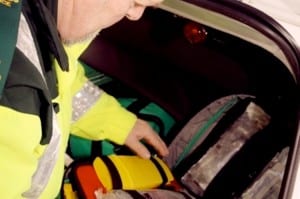 The new Ambulance Services Cardiovascular Quality Initiative (ASCQI) website was launched this month. The website describes how the ASCQI project, funded by the Health Foundation’s Closing the Gap in Clinical Communities Programme, achieved its aims as the first national quality improvement collaborative involving all English ambulance services.
The new Ambulance Services Cardiovascular Quality Initiative (ASCQI) website was launched this month. The website describes how the ASCQI project, funded by the Health Foundation’s Closing the Gap in Clinical Communities Programme, achieved its aims as the first national quality improvement collaborative involving all English ambulance services.
The aims of ASCQI were to improve ambulance care for heart attack and stroke across England and specifically:
-
To improve the delivery of care bundles for AMI from 43% to over 70% within two years of the project
-
To improve delivery of care bundles for stroke from 83% to over 90% within two years of the project
-
To increase diffusion of quality improvement methods to frontline staff in ambulance services.
 As a result of the collaborative nine out of twelve ambulance trusts showed a significant improvement in either the stroke or AMI care bundle, and seven out of twelve showed significant improvements for both AMI and stroke. Performance for the care bundle for AMI increased from 43 percent to 79 percent, and for stroke 83 percent to 96 percent during the two years of the project and these improvements have been maintained. These results were published in the journal Implementation Science. A secondary aim of the initiative was to begin to develop patient reported experience measures (PREMs) for AMI and stroke. Preliminary qualitative work for development of PREMS for ambulance services was published in the EMJ, and this work is being continued by Fiona Togher of CaHRU through a funded doctoral study.
As a result of the collaborative nine out of twelve ambulance trusts showed a significant improvement in either the stroke or AMI care bundle, and seven out of twelve showed significant improvements for both AMI and stroke. Performance for the care bundle for AMI increased from 43 percent to 79 percent, and for stroke 83 percent to 96 percent during the two years of the project and these improvements have been maintained. These results were published in the journal Implementation Science. A secondary aim of the initiative was to begin to develop patient reported experience measures (PREMs) for AMI and stroke. Preliminary qualitative work for development of PREMS for ambulance services was published in the EMJ, and this work is being continued by Fiona Togher of CaHRU through a funded doctoral study.
 The website includes a range of resources which were used by ambulance services to deliver the improvements that we saw nationally. The work is now helping to inform similar prehospital improvement initiatives in the Middle East and North America and will be featured in a session on key care pathways in a Web and Action webinar series developed by the Institute for Healthcare Improvement, a world leader in healthcare quality improvement based in the United States, starting in March 2015.
The website includes a range of resources which were used by ambulance services to deliver the improvements that we saw nationally. The work is now helping to inform similar prehospital improvement initiatives in the Middle East and North America and will be featured in a session on key care pathways in a Web and Action webinar series developed by the Institute for Healthcare Improvement, a world leader in healthcare quality improvement based in the United States, starting in March 2015.
